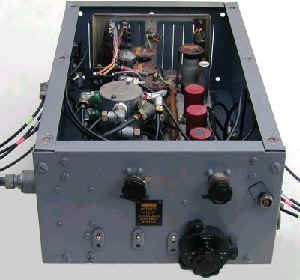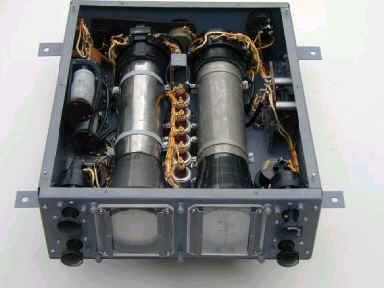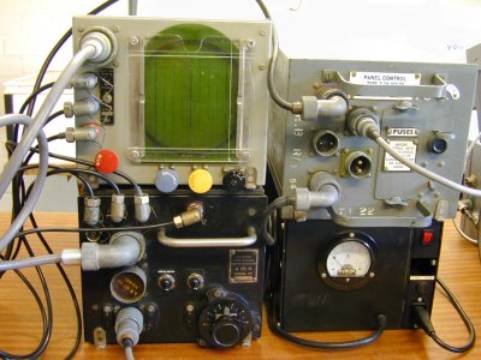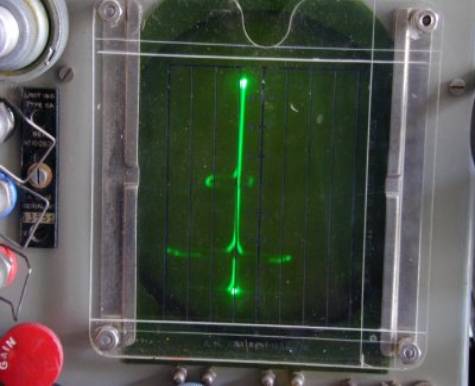The wartime radar sets
In the meantime development work was still continuing on AI radar although the first AI system (Mark I) was considered a bit of a disaster since it was unreliable and primitive even when it worked. The next set the AI Mark II wasn't that much better, however since everything about AI was completely new, it was a bit like learning on the job both for the night fighter aircrew, the ground crew (who had to maintain the system) and the scientists themselves - who were also learning the needs of the aircrew.
The original sets were fitted into Bristol Blenheim’s, which events were to show were too slow and too poorly armed to be very effective. Following their disastrous performance in the Battle of Britain, the radar was also tried out in the Bolton Paul Defiant although this was no more successful.
The next model (AI Mark III) was an improvement and did give Night fighter crews a sporting chance of an interception however the radar had a maximum range of about 2,750 metres (9,000 feet) under optimum conditions, and a minimum range of about 250 metres (800 feet).
The shortcoming of the system being that to obtain a successful interception, ground controllers still had to guide the aircraft onto the target very accurately if the radar was to have any chance of detecting the intruder and by and large it still took a lot of skill and judgement by the pilot to obtain a kill.
This radar was fitted to the Blenheim (and later the Beaufighter) consisted of a transmitter aerial in the nose of the aircraft and a pair of receiving aerials well outboard on each wing. This allowed the radar operator to judge if the target was to the left or right of the aircraft and above or below, thereby allowing the pilot to turn into the target.
Recognising that there was still considerable scope for improvement, the help and assistance of Alan Dower Blumlein who was considered Britain’s most prominent electrical engineer was enlisted along with EMI who manufactured the high definition CRT display using their technology developed from TV screens.
Bringing in a top professional was a great help to the often ingenious but sometimes-amateurish scientists, and Blumlein was able to develop a fast pulse-switching scheme that cut the minimum range of AI to 130 metres (426 feet) thus giving the night fighter crew a better chance to obtain visual contact.
The result was AI Mark IV, which was a major step forward from its predecessors and the first set made in volume by EKCO Malmesbury. In all it is believed that some 3000 Mark III and IV units were manufactured between 1940 and 1942.
This radar was initially installed in Blenheims although the majority were fitted to the Beaufighter, which came into service as the Blenheim replacement; this version was also fitted to early Mosquitoes and initially was the only unit to be allowed to fly over occupied Europe due to concerns about ‘magnetron’ technology falling into enemy hands.
The shortcoming of the Mark IV was that it operated on fairly long wavelengths (195 MHz) and it was underpowered i.e. it could not generate a strong enough radar beam for long range target acquisition.
Due to aerial design, strong echoes were received from the ground directly under the aircraft, which of course meant that tracking signals when flying low was particularly difficult, due to the target echo being swamped by ground return signals, which effectively limited the range. The maximum range was roughly the same as the height of the aircraft i.e. if the aircraft was at 6000 feet; the radar range was also 6000 feet.
On the plus side, the sets had become much more reliable, their operators became far more competent due to better training and invariably the good pilots recognised that they needed to team up with radar operators, which in turn meant that night fighter crews started to accumulate signifigent numbers of successful interceptions and kills.
Two night fighter aces to emerge as a result of flying Beaufighters with AI Mark IV were Wing Commander John Cunningham and Wing Commander John Braham
|
|
Description of the AI Mark IV
The following photos of the AI Mark IV are courtesy of Norman Groom of the Pitstone Green Museum (http://website.lineone.net/~norman.groom) who in addition to building and displaying a cockpit section of a Lancaster is an avid collector and restorer of WW2 radar sets. For readers who wish to see technical data on these units, please visit the above site.
 |
The receiver unit, R3102A
|
 |
The Indicator Unit, Type 48A The R/H screen displays port or Starboard target indications and distance in vertical mode. The L/H screen displays up or down target indications in horizontal mode (azimuth). Both screens have graticule markings calibrated in miles |
 |
R/H
CRT Display
The bottom echo is the transmitter breakthrough pulse, which limits the close approach range. The small echo above this echo is the target pulse. The top echo is the ground effect pulse, which fades away at greater distances giving what was known as the ‘Christmas tree’ effect |
Description of the ASV Mark II
The ASV Mark II worked on very similar principles to the AI Mark IV however only two aerials were required (port and Starboard) since there was no need to measure the height of the target – for obvious reasons. Again the mark II was a major step forward from its predecessor.
Another variation of the radar used a large aerial array mounted on top of the fuselage. This was used broadside on for sweeping shipping lanes. The system could also be used as a beacon receiver at ranges up to 90 miles.
EKCO Malmesbury also made these sets in volume. As with the AI Mark IV, it is believed that some 3500 ASV Mark II units were manufactured between 1940 and 1942.
The sets were installed in many Coastal Command aircraft including the Vickers Wellington Mark XI and later in the Consolidated Liberator when patrols began to extend out into the Bay of Biscay and the Atlantic.
The Fleet Air Arm also fitted ASV Mark II as standard to their Fairy Barracuda Mark II aircraft.
These radars were of assistance in countering the U-Boat menace and did give the Germans cause for concern as the number of U-Boat loses mounted. It continued to give the Allies an edge until a Wellington unfortunately crashed over occupied territory and from the wreckage, the German scientists were able to determine the operating frequencies, which then enabled them to build a radar-warning receiver for the U-Boats called ‘Metox’.
 |
Receiver R3132
|
 |
The target echo is the upper echo, which shows the target is off to the left (port). The range to target is distance from the bottom of the trace. The large lower echo is the ‘sea rebound’ effect’ and represents the aircraft height over the sea. |
